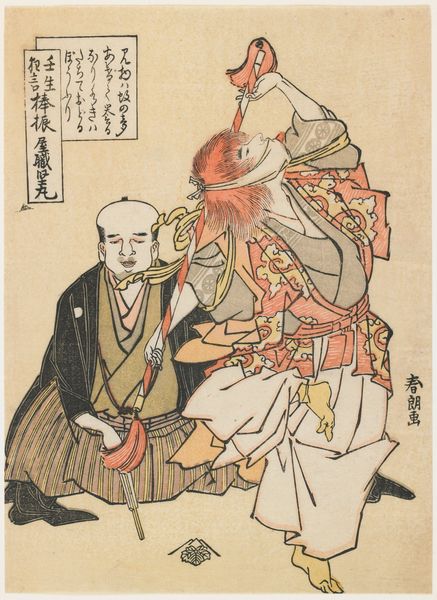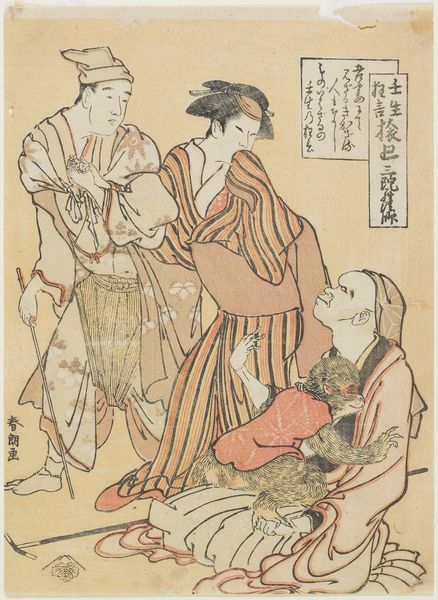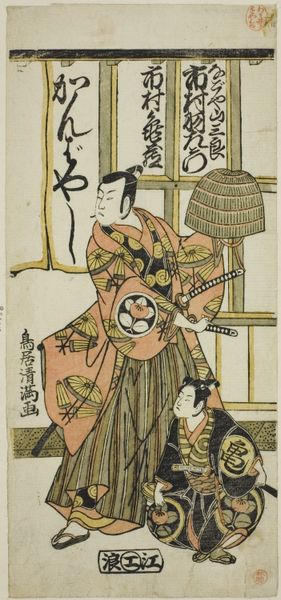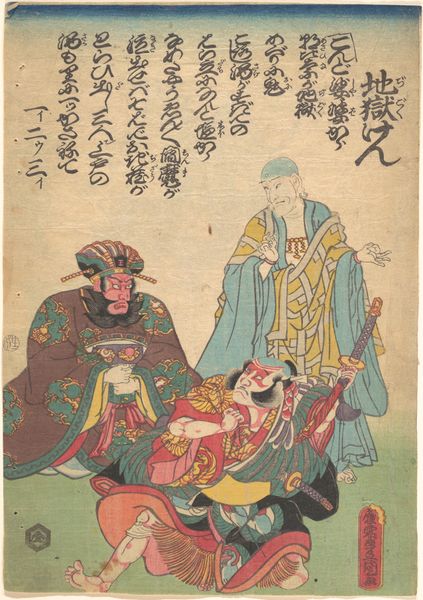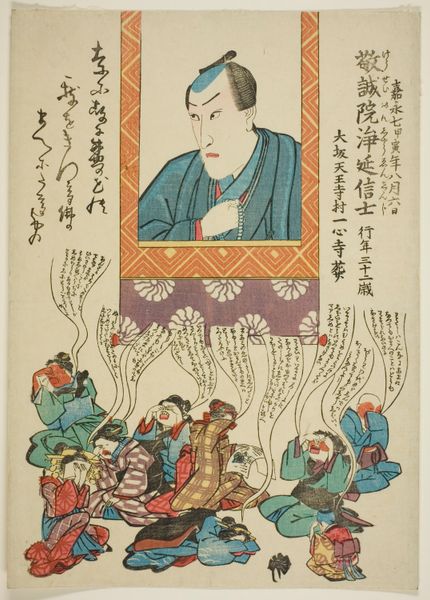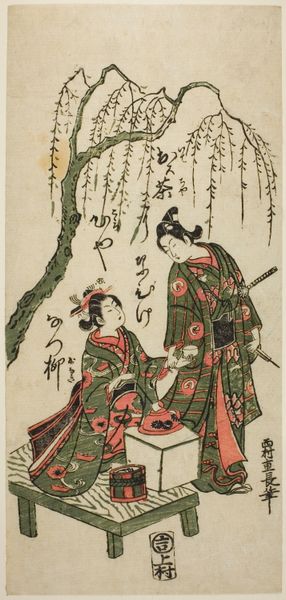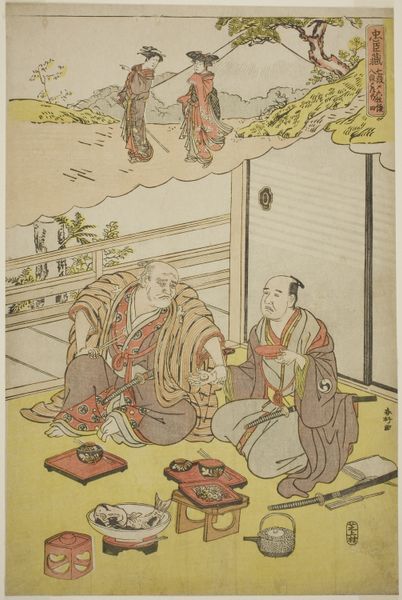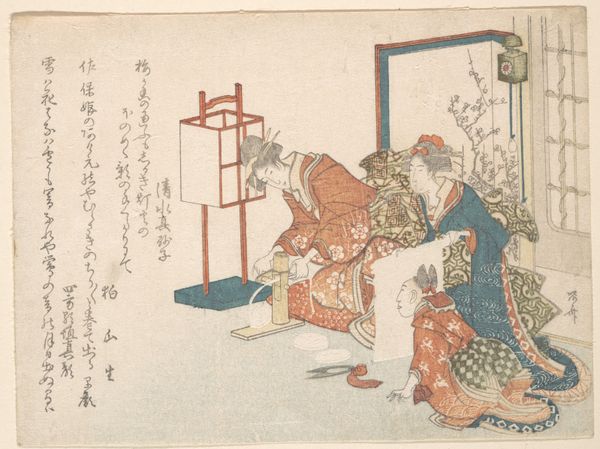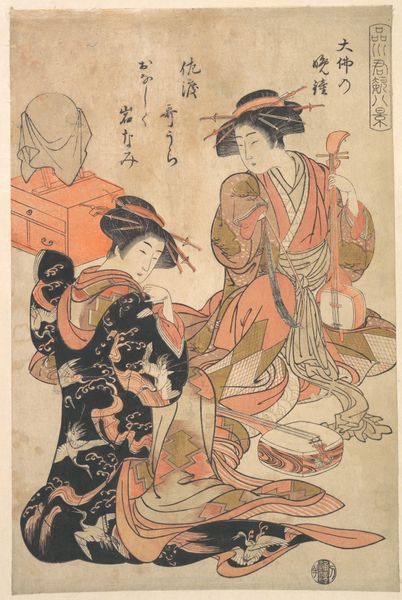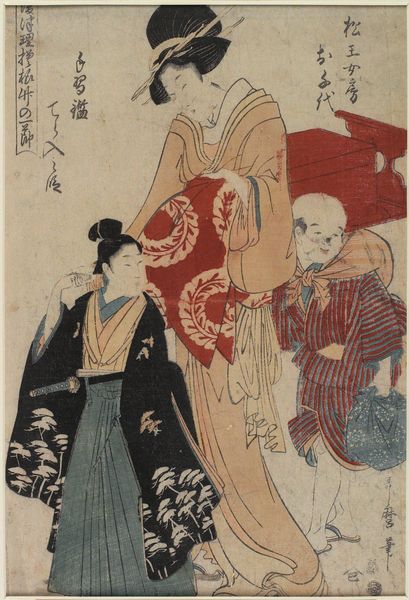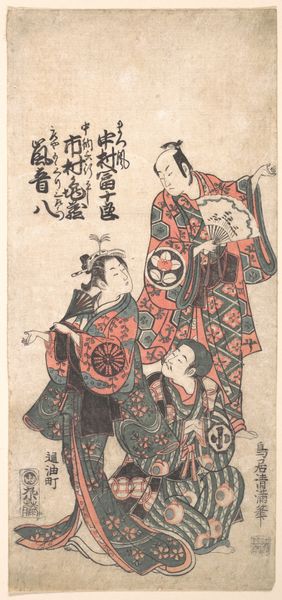
print, ink, woodblock-print
#
portrait
# print
#
ukiyo-e
#
figuration
#
ink
#
woodblock-print
Dimensions: 8 1/4 × 6 1/16 in. (21 × 15.4 cm) (image, sheet, vertical chūban)
Copyright: Public Domain
Curator: Welcome. Here we have Katsushika Hokusai's "Flower Thief," a striking woodblock print crafted around 1790. It is currently held here at the Minneapolis Institute of Art. Editor: My initial gut reaction? Chaotic good! The characters are bizarre, even humorous in a twisted sort of way. There’s a palpable tension, a sense of something illicit happening, rendered in surprisingly bright, almost cheerful colors. Curator: It's part of the Ukiyo-e tradition, "pictures of the floating world," reflecting the lives and styles of Edo-period Japan, particularly those associated with the pleasure districts. Prints like this served a broad public appetite for theatrical figures and tales of adventure, romance, and even banditry. We are seeing an active theft portrayed, a literal ‘flower thief,’ the ‘flower’ implying illicit romantic activities. Editor: Right! It feels transgressive, especially with that central figure standing almost nonchalantly while those figures beneath him wrestle with fate and maybe each other. He looks like he could care less about them and what their problems might be, haha. It’s like watching a low-budget Kabuki play unfold. Do we know any characters are named, though? Curator: One could interpret these types of ‘flowers’ in many different ways but as you will come to understand in Japanese artwork; we often don't find that our view matters but is often dictated. Also, each character might have a symbolic function related to the specific narrative Hokusai is referencing; and although that story has long been lost, we see this art being portrayed and retold in media today. Editor: So, it's not just an isolated scene, but something bigger, like an interlude from an epic poem rendered in wood and ink. I'd buy tickets to see it performed onstage. Curator: It also tells us something about the cultural appetite for the portrayal of those perceived to be socially outside normal acceptable standards. They are romanticizing that kind of banditry for many other reasons. It’s interesting to consider where we are today… are we all flower thieves? Editor: Food for thought! Curator: Yes it is. We hope you appreciated our perspective. Please feel free to reflect on your ideas about this beautiful image.
Comments
minneapolisinstituteofart almost 2 years ago
⋮
The play "Offering Pails of Water" centers on a love affair between a young beautiful woman and an older married man. They first meet at Mibudera Temple where the woman comes every day to offer a pail of water to the deity of the temple. For this print, Hokusai depicted the moment when the man fell in love with the woman. The man's obvious excitement comically contrasts with the woman's indifference. In 1793, shortly after his teacher's death, Hokusai left the Katsukawa School and joined another studio founded by the painter Tawaraya Søri. Nevertheless, his association with the Katsukawa School had a profound effect on his development as an artist.
Join the conversation
Join millions of artists and users on Artera today and experience the ultimate creative platform.
